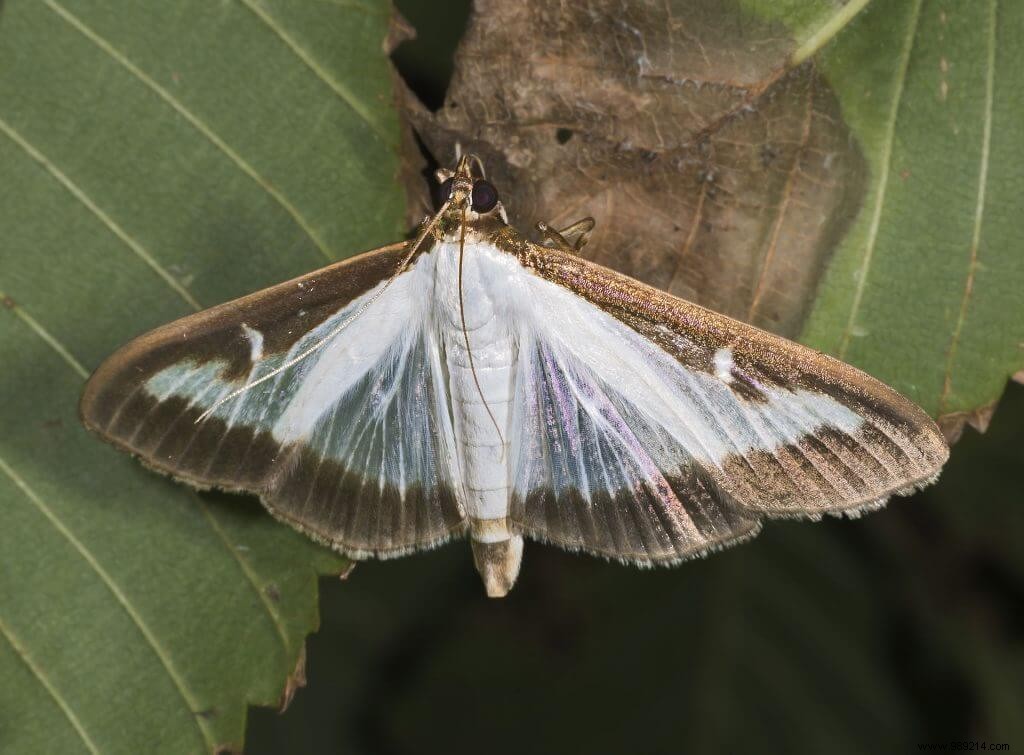The moth boxwood is a moth, Cydalima perspectalis, and which has no natural predator in Europe. This Asian butterfly forgot to bring it with him, even though a micro wasp, a natural parasite, has recently been studied.
The butterfly, 3 to 4 cm wide, has brown and white wings. But it is indeed the larva , the caterpillar which is the new scourge for box trees. The caterpillar is green with a darker green stripe lengthwise. She has black pustules on her body and a very black head. Fortunately, it is not stinging.
The moth lays its eggs on the underside boxwood leaves. Many, and often; there are 2 to 3 generations per year.
It is good to notice the presence of the moth before the leaves turn brown and dry … You can see filaments , like threads of cobwebs, in the shrub and even at its base. The caterpillars are clearly visible, very voracious.
In the larval stage, (caterpillar) sprays of Thuringian Bacillus (bacillus thuringensis) are the most effective. But because the boxwood is thick, you have to "get" the product well into the boxwood to reach the tracks. Two treatments 8 days apart should be sufficient. Until the next egg laying... Plan one treatment per month from March to October.
Like all animal parasites, you can try to dislodge larvae and eggs with a powerful jet of water . It always does a little less on the shrub.
pheromone traps are posed to capture the male butterflies, which makes it possible to notice the presence of the moth. Attacks begin in early spring, as the last generation (September) pupates and overwinters in the box trees.
You can also wrap the boxwood with an anti-insect veil. but the aesthetic effect takes a hit! effective but ugly.
Might as well make one before the treatment to eliminate a little foliage. In principle, evergreen shrubs are pruned in April and August/September (the months in A), in fact, during the growth period for better healing.

pyrale-du-buis:photo credit:https://fr.wikipedia.org/wiki/Pyrale_du_buis

box tree moth, caterpillar photo credit:http://www.tce-jardins.com/